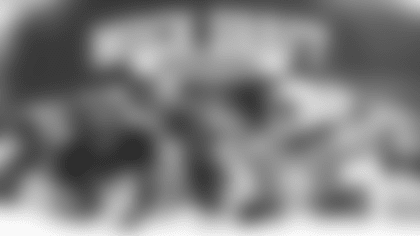Lock down corners, shut down safeties, ball hawks, whatever it is that you call them; they are quickly receiving the credit they have long deserved. Every year defensive backs (DBs) are being recognized more and more throughout every level of football. This is your opportunity to make yourself known as not only a defensive threat, but as a ball finding machine.
The Preps Pro Combine understands the role defensive backs play in the game of football. This is an opportunity for the DBs to see what exactly is in store for them at the 2012 Preps Pro Combine.
The first part of the combine will consist of getting the non position specific measurements of the defensive backs. This includes vertical reach, vertical jump, broad jump, handheld 40- yard dash that measures both the first 10 yards as well as the whole 40- yards, electronic 40-yard dash, bench press maximum reps at 185 lbs., 5-10-5 yard drill, and the 3-cone drill.
After these are completed the defensive backs will participate in a series of position based drills. The DBs will participate in both the "W-Drill" and the centerfield turn drill. These drills are the best way to immediately find out the strengths and weaknesses of the defensive backs.
The "W-Drill" will begin with a DB facing the endzone lined up outside the cone on the left in a proper defensive back stance. The coach will signal the DB to backpedal for at least 5 yards, the coach will then signal the DB to make a brake upwards towards the cone in the middle (coach is moving laterally towards this cone while DB is in their backpedal). As the DB approaches the cone, the coach gives a signal to backpedal for 5 more yards before having the DB break towards the outside of the last cone. The DB will then look to catch the ball thrown to him by a QB when he passes the final cone. The drill will then be repeated in the opposite direction.
The centerfield turn drill will be the next position drill the defensive backs will participate in. A defensive back will align on the right hash facing the coach. The coach will signal the DB into a backpedal for 5 yards then signal them to the left. The DB will then flip their hips in this direction; the coach will signal the DB to open their hips in the opposite direction. The next step is where the coach will signal the ball straight up, the DB will then make a centerfield turn (turns to his left with his back to the coach), and then react to the deep post route being thrown by a quarterback standing on the opposite hash of the coach. The DB will make a play on the ball, try to intercept, and then return the ball to the end position.
Scouts and coaches are looking for a variety of strengths when recruiting defensive backs. They are looking for the ability for the DB to move from one direction to the other, especially out of their backpedal since that is the position a DB is in a majority of the time. Backpedal speed is also an important aspect of a DB's game. They are also looking for a defensive back that has quick hips, and can quickly stop his momentum moving in one direction and explode into the opposite direction. Ball awareness is crucial as well. A defensive back must be able to find the ball once it is in the air and make a play on it.
Practicing these movements are crucial to a DB's success. Coaches are looking for the combination of change of momentum, backpedal speed, field and ball awareness, and last but not least not only the ability to go up and get the ball, but to come down with it.
Registration for the 2012 Preps Pro Combine is still open, but only a few spots remain, click here to register now.
GOOD LUCK!






